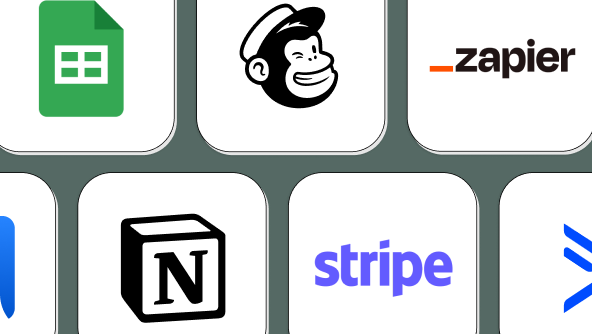
Products
PaperformPaperform is an online form builder like no other. It combines serious digital smarts with beautiful design to create endless possibilities.PapersignSimplify document signing with Papersign, so you can spend less time in email chains and more time on the important stuff.
Solutions
Web FormsScheduling FormsOrder FormsPayment FormsCalculation FormsSubscription FormsConditional LogicLanding page FormsQuiz MakerPoll MakerSurvey MakerTest Maker
All Solutions

Explore all the solutions you can create with Paperform: surveys, quizzes, tests, payment forms, scheduling forms, and a whole lot more.
See all solutionsIntegrations












Connect with over 2,000 popular apps and software to improve productivity and automate workflows
See all integrationsResources
BlogReal-life stories, trends, and strategies to help you grow your business.CareersJoin the company that prioritises 'life-work' balance.Online Signature GeneratorCreate and download a signature. Getting StartedHelpful guides to get you on track.Help CenterWe've got all the answers to your questions.
PricingSolutions
All Solutions

Explore all the solutions you can create with Paperform: surveys, quizzes, tests, payment forms, scheduling forms, and a whole lot more.
See all solutionsIntegrations

Connect with over 2,000 popular apps and software to improve productivity and automate workflows
See all integrationsResources
How do I give a customer the option to pay now OR pay later?
Related Articles
Can I have a payment field that doesn't take payment, like a quote or order form?
You can set up your forms so that they don’t take payment upon form submission, regardless of the price by selecting the "No Account (Don’t take payment)” option in the payments account configurations.
How do I connect and configure a Stripe account?
To connect and configure your Stripe account in order to start accepting payments, navigate to your Account Services via your Account Settings and click the button "Connect Stripe".
How do I connect a Paypal Business Account?
You can connect a PayPal Business account to your Paperform account by creating REST API apps in PayPal's developer portal. After the app has been created, select Connect PayPal Business in your account settings and enter the required details.
 Custom pricing rule for conditionally zeroing out the form's total
Custom pricing rule for conditionally zeroing out the form's total Authorize payment for future capture
Authorize payment for future capture